In the fast-moving world of digital design, AI Tools for Wireframing & Prototyping have become the backbone of great user experiences. As projects grow more complex and deadlines tighter, traditional manual methods slow design teams down. Sketching layouts, aligning components, and revising flows can take hours especially when collaboration happens remotely or across time zones. That’s exactly where AI Tools for Wireframing & Prototyping are changing the game.
By 2025, artificial intelligence will be a need rather than a luxury in design. These AI-powered design tools are changing the way UX teams work by automating layout creation and turning plain text prompts into useful wireframes. In addition to accelerating ideation, they guarantee accuracy, consistency, and accessibility, enabling developers, designers, and even non-designers to realize concepts in minutes as opposed to days.
This guide compares the features, costs, and best use cases of the top 12 AI tools for wireframing and prototyping that will be on the market in 2025. Whether you work as a freelance UX designer, a startup founder, or a member of an enterprise team, you will learn how AI wireframing tools improve collaboration, expedite prototyping, and unleash creativity.
Table of Contents
What are AI Tools for Wireframing & Prototyping?
Prototyping and wireframing are crucial phases in any UI/UX design process. A prototype is an interactive version that mimics user interactions and journeys, whereas a wireframe describes the fundamental layout of a digital interface, much like a blueprint. These were traditionally made from scratch by designers using programs like Sketch, Adobe XD, or Figma.
However, AI wireframing tools elevate this procedure to a completely new level. Designers can now start with a ready-to-edit wireframe by simply typing the command, "Create a dashboard layout for a SaaS app," rather than starting from scratch. These platforms interpret prompts, examine design patterns, and produce aesthetically pleasing layouts using computer vision, machine learning, and natural language processing (NLP).
Modern AI prototyping tools also go beyond static wireframes. They can automatically add interactions, simulate transitions, and even recommend improvements based on usability best practices. Some integrate directly with popular platforms like Figma, while others work as standalone AI design assistants. Essentially, they act as your smart co-designer reducing repetitive tasks and giving you more time to focus on creativity and strategy.
Why AI Tools for Wireframing Matter in 2025
In 2025, speed, automation, and inclusivity will influence design trends. AI tools for wireframing have become essential for remaining competitive as product lifecycles are becoming shorter and design teams are working across continents. More than 93% of creative teams now use AI at some point in their design process, according to recent market research, and wireframing is among the top three areas undergoing the largest change.
Teams can test multiple layouts, validate ideas quickly, and iterate more quickly without coding thanks to AI-powered wireframing tools. Through text-based prompts or visual automation, they also make design more approachable by enabling non-designers, product managers, and even clients to take part in early-stage ideation. This translates into reduced design costs, improved collaboration, and quicker feedback loops for agencies and startups.
Furthermore, AI wireframing software helps close the gap between concept and development as low-code and no-code platforms become more popular. Users can already create clickable prototypes from sketches, screenshots, or text descriptions using tools like Visily AI and Uizard. To put it briefly, AI-driven design aims to increase designers' creativity and productivity rather than replace them.
The best AI wireframe tools that are revolutionizing UI/UX workflows in 2025 will be compared in the sections that follow, ranging from smart prototyping assistants that think like designers to text-to-wireframe generators.
Comparison Table of AI Tools for Wireframing & Prototyping
| Tool / Product | Pricing | Best For | Key Feature |
|---|---|---|---|
| Visily AI | Free plan; Pro from $12/month | Non-designers & startups | Text-to-wireframe AI generation |
| Uizard | Free trial; Pro from $12/month | Designers & product teams | Screenshot-to-wireframe AI |
| Figma AI | Free for individuals; Team plans vary | UI/UX professionals | AI-powered component suggestions |
| Framer AI | Free tier; Pro from $15/month | Web designers & developers | AI page builder & prototype generator |
| MockFlow AI | Free basic; Premium from $14/month | UX wireframing teams | AI layout recommender |
| TeleportHQ | Free tier; Pro from $20/month | Front-end developers | Code-based AI prototypes |
| Balsamiq AI Assistant | From $9/month | Early-stage startups | AI suggestions for wireframes |
| WireGen | From $19/month | Product managers | Prompt-based wireframe generation |
| Designify AI | Free basic; Premium from $10/month | Creative designers | Auto-enhanced mockups & prototypes |
| Sketch2React | Free community; Pro $15/month | Designers → developers handoff | Converts Sketch/Figma to React |
| Axure RP AI Beta | Starts $29/month | Enterprise UX teams | AI auto-interactions |
| Zeplin AI | From $19/month | Large design teams | Smart documentation & prototyping |
Detailed AI Tools for Wireframing & Prototyping Reviews
1. Visily AI
Overview:
Visily AI is one of the most beginner-friendly AI wireframing tools designed to help non-designers bring ideas to life visually. It uses natural language prompts to instantly generate app screens, web pages, or dashboard layouts. Its AI understands design intent, creating editable wireframes that look professional and consistent without needing deep UX expertise.
Key Features:
- Text-to-wireframe generation from simple prompts
- Screenshot-to-design conversion
- Collaboration and versioning tools
Best For: Startups, product managers, and teams without dedicated designers.
Pros & Cons:
| Pros | Cons |
|---|---|
| Easy-to-use interface | Limited custom styling options |
| Excellent for non-designers | Not ideal for high-fidelity designs |
| Real-time collaboration | Requires internet connection |
See Visily AI pricing, key features, and real user feedback.
2. Uizard
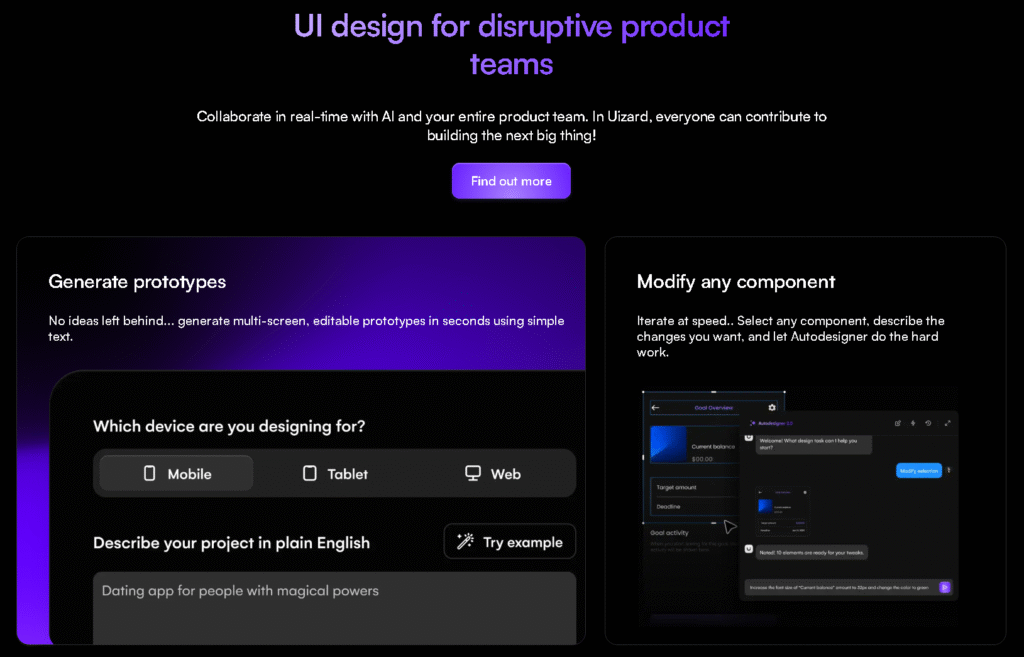
Overview:
Uizard has revolutionized AI tools for wireframing with its ability to turn hand-drawn sketches or screenshots into interactive prototypes. It’s one of the best AI wireframe tools in 2025 for teams that need rapid ideation. With built-in design templates and intuitive editing, Uizard allows anyone even those with no design background to build professional wireframes in minutes.
Key Features:
- Screenshot-to-wireframe and sketch import
- AI layout analysis and color theme generator
- Collaboration-friendly workspace
Best For: Startups, UX designers, and educators.
| Pros | Cons |
|---|---|
| Super fast AI conversion | Occasional layout mismatches |
| Supports team collaboration | Free version is limited |
| No-code approach | Some advanced features require paid plan |
Compare Uizard IO pricing, features, and reviews.
3. Figma AI

Overview:
Figma, a leader in design collaboration, recently integrated Figma AI features that make wireframing faster and smarter. It assists designers by suggesting UI components, automating layout alignment, and generating text or color ideas. The AI capabilities extend to content creation and accessibility testing making Figma more than just a prototyping tool, but a complete design assistant.
Key Features:
- AI-driven layout suggestions
- Smart copywriting and content fillers
- Plugin ecosystem for automation
Best For: Professional designers and collaborative teams.
| Pros | Cons |
|---|---|
| Industry-standard for design | Requires learning curve |
| Excellent plugin integrations | AI features still evolving |
| Real-time collaboration | Pricing can be high for freelancers |
Detailed overview of Figma: features, pricing, and use cases.
4. Framer AI
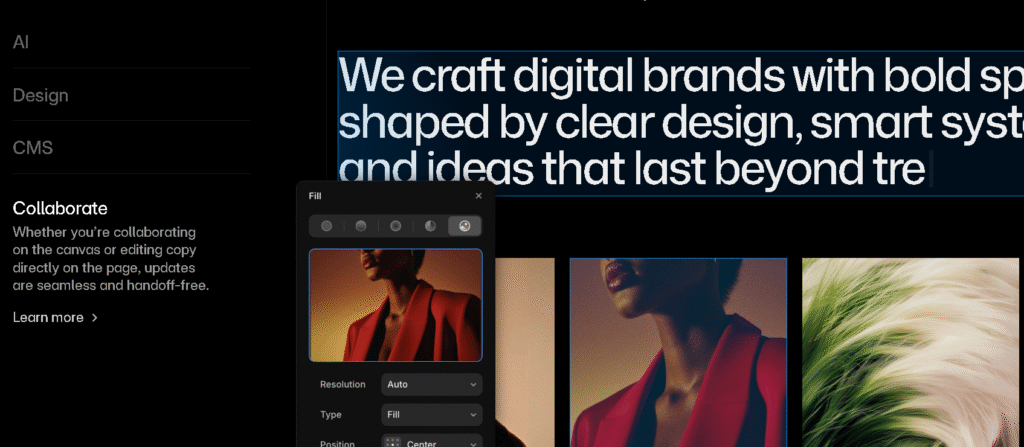
Overview:
Framer AI lets you build and publish fully responsive prototypes from text prompts. It blends AI prototyping tools with web design, helping teams go from wireframe to live website faster than ever. With an emphasis on interactivity, Framer AI generates production-ready code ideal for designers who want to skip the handoff stage.
Key Features:
- Text-to-website AI builder
- Interactive animations and responsive layouts
- Live publishing options
Best For: Freelancers, web designers, and no-code creators.
| Pros | Cons |
|---|---|
| Turns prototypes into real sites | Limited CMS options |
| Great visual animations | Requires modern browser support |
| Fast, intuitive AI prompts | Higher learning curve for new users |
Get complete insights into Framer AI pricing and capabilities.
5. MockFlow AI
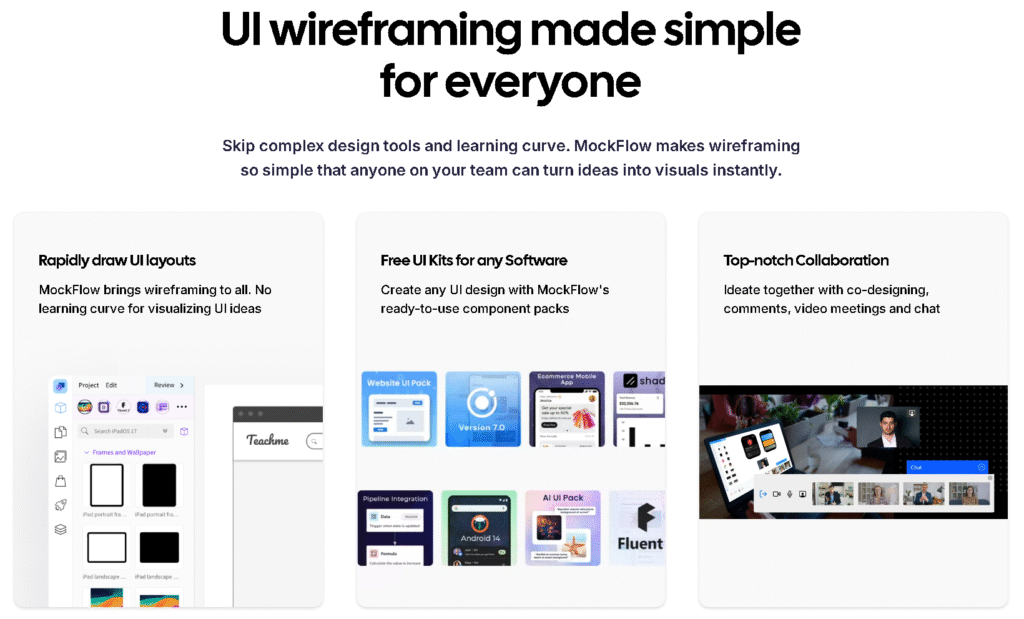
Overview:
MockFlow remains one of the most reliable wireframe design software options, now enhanced with AI. Its AI assistant can automatically recommend layouts and UI patterns based on your project type. This helps users design consistent structures faster while maintaining usability best practices.
Key Features:
- AI layout recommender
- Cloud-based team collaboration
- Design system management
Best For: UX teams and educational institutions.
| Pros | Cons |
|---|---|
| Rich prebuilt UI kits | Limited animation support |
| Affordable pricing | Slightly dated interface |
| Great for documentation | Requires manual refinement after AI suggestion |
In-depth Mockflow AI review with features and pricing guide.
6. TeleportHQ
Overview:
TeleportHQ bridges the gap between design and development by turning prototypes into front-end code using AI. It’s ideal for product teams who want to generate HTML, React, or Vue components directly from wireframes. Unlike visual-only tools, it focuses on AI-powered prototyping that integrates seamlessly with developer workflows.
Key Features:
- Design-to-code generation
- Real-time collaboration with developers
- Integrations with Git and design systems
Best For: Developers, technical designers, and agile teams.
| Pros | Cons |
|---|---|
| Great for design-to-code workflow | Requires developer understanding |
| Supports multiple frameworks | Limited no-code flexibility |
| Excellent for rapid prototyping | UI could feel technical to beginners |
See TeleportHQ pricing, key features, and real user feedback.
7. Balsamiq AI Assistant
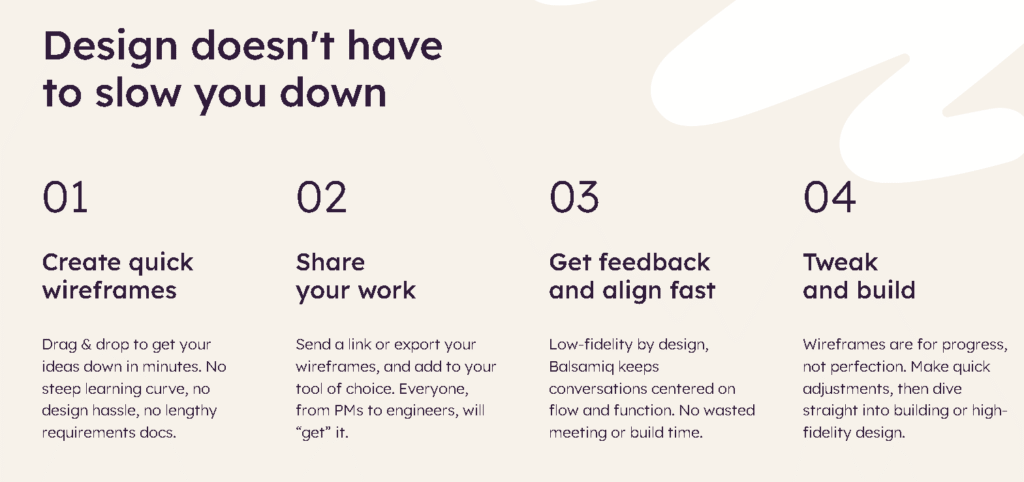
Overview:
Balsamiq has long been a classic for low-fidelity wireframes, and its AI Assistant now brings smart suggestions to speed up layout creation. This update helps users focus more on structure and logic while the AI suggests suitable UI elements and placements automatically.
Key Features:
- AI-assisted layout creation
- Quick drag-and-drop wireframing
- User-friendly sketch-style interface
Best For: Beginners and early-stage startups.
| Pros | Cons |
|---|---|
| Simple and intuitive | No high-fidelity design |
| Ideal for brainstorming | Limited integrations |
| Lightweight software | Basic AI capabilities only |
Learn more about Balsamiq AI: pricing, features, and user reviews.
8. WireGen
Overview:
WireGen is a prompt-based wireframing tool built for text-to-layout generation. Users can describe a screen, like “mobile app login page with two buttons,” and WireGen instantly generates a clean wireframe ready for editing. Its simplicity and accuracy make it perfect for quick ideation.
Key Features:
- Natural language prompt-to-design
- Auto-layout suggestions
- Export to Figma and PNG
Best For: Product managers and ideation sessions.
| Pros | Cons |
|---|---|
| Extremely fast wireframe creation | Limited customization |
| Exports easily to design tools | Lacks advanced prototyping features |
| Great for early ideas | AI may misinterpret complex prompts |
9. Designify AI
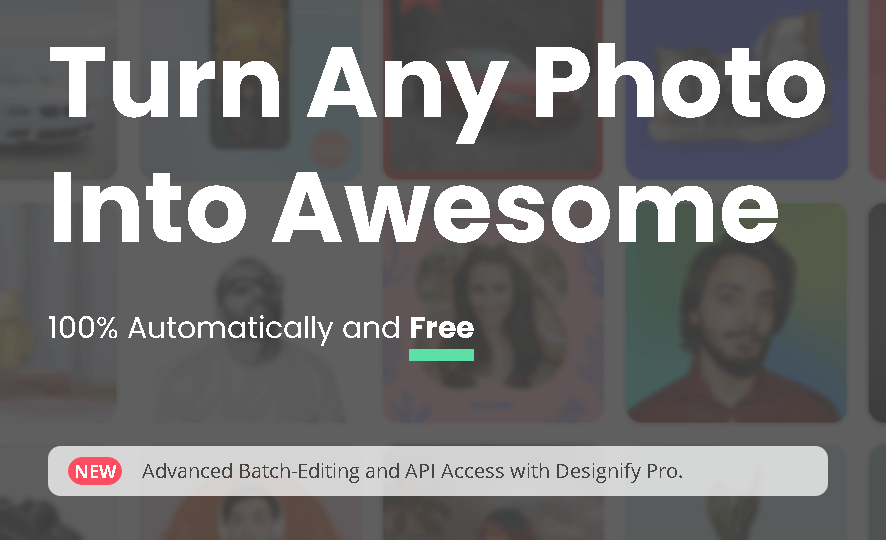
Overview:
Designify AI focuses on creating visually enhanced mockups and prototypes using automation. While it’s known for its image editing capabilities, its wireframing functions are growing rapidly, offering auto-generated layouts and style consistency checks.
Key Features:
- AI-generated mockups
- Auto color and spacing optimization
- Template-based designs
Best For: Creators, marketers, and social media designers.
| Pros | Cons |
|---|---|
| Beautiful AI-enhanced visuals | Limited UX-specific features |
| Fast for design mockups | Not ideal for complex interfaces |
| Great for branding visuals | Lacks developer handoff tools |
Discover Designify AI’s pricing, features, and performance reviews.
10. Sketch2React

Overview:
Sketch2React is an AI-assisted design-to-code platform that converts Sketch or Figma files into responsive React components. This makes it one of the best tools for bridging design and development. It’s particularly useful for teams who want to turn wireframes into working code without manual effort.
Key Features:
- Converts design files into HTML/React code
- AI layout consistency checks
- Supports atomic design principles
Best For: Front-end developers and design engineers.
| Pros | Cons |
|---|---|
| Streamlines handoff process | Requires React knowledge |
| AI layout validation | Limited free version |
| Saves time in coding | Works best with structured designs |
In-depth Sketch2React review with features and pricing guide.
11. Axure RP AI Beta
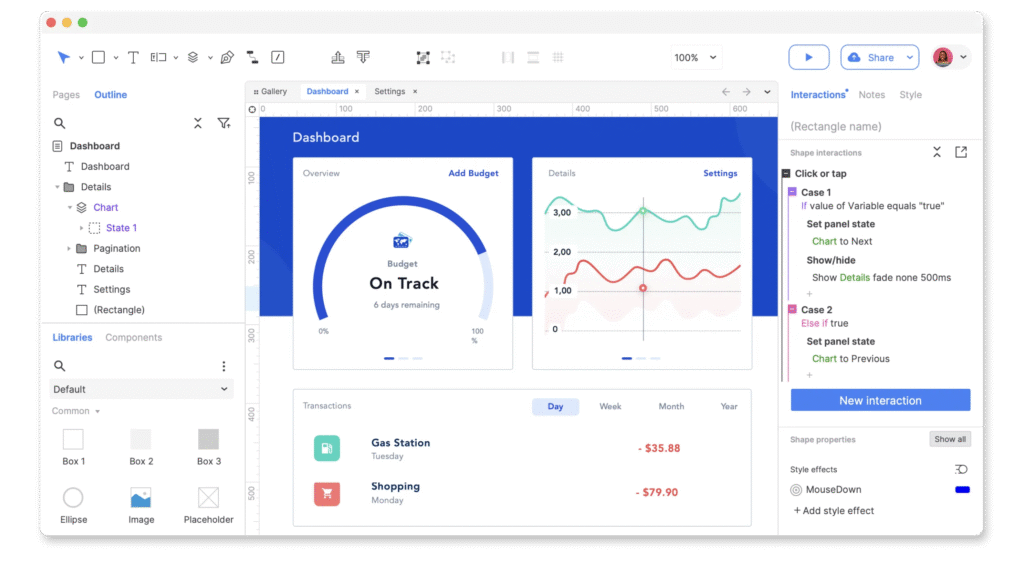
Overview:
Axure, known for its enterprise-grade prototyping, is introducing AI-powered beta features. The AI helps generate interactions, predict user flows, and even optimize accessibility settings automatically. This positions Axure RP as a powerhouse among AI prototyping tools for large teams.
Key Features:
- AI flow prediction
- Interactive prototyping
- UX analytics insights
Best For: Enterprise UX designers and research teams.
| Pros | Cons |
|---|---|
| Deep prototyping capabilities | Complex interface |
| Ideal for UX research | Pricey for small teams |
| Reliable enterprise support | Beta AI features still improving |
Get complete insights into Axure RP AI pricing and capabilities.
12. Zeplin AI
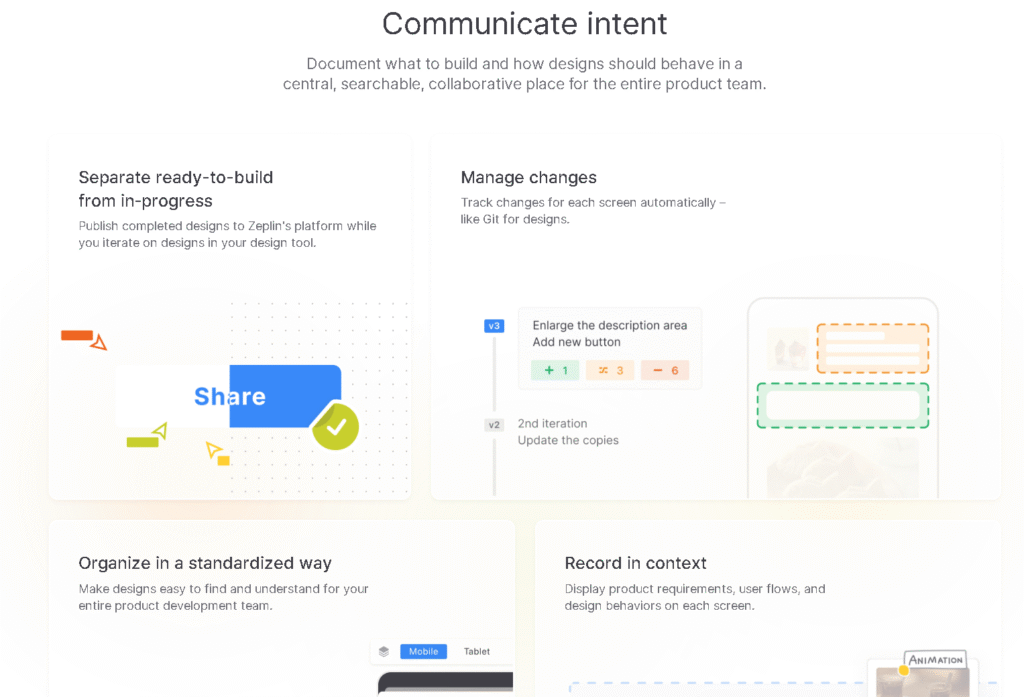
Overview:
Zeplin has evolved from a design handoff platform into an AI-powered documentation hub. It uses AI to organize design specs, generate prototypes, and automatically label components. For big teams juggling multiple projects, Zeplin AI helps maintain clarity between designers and developers.
Key Features:
- AI documentation automation
- Smart component detection
- Version control for design assets
Best For: Large agencies and cross-functional product teams.
| Pros | Cons |
|---|---|
| Excellent design-to-dev clarity | Premium pricing |
| Improves collaboration efficiency | Some AI features in beta |
| Centralized asset management | Requires integration setup |
See Zeplin AI pricing, key features, and real user feedback.
Check out more at tooljunction, we share honest AI tool reviews and tutorials to help you choose the right tools for your creative projects.
FAQs
1. What is the difference between wireframing and prototyping?
Wireframing is the initial stage of designing an interface focusing on structure, layout, and user flow.
Prototyping, on the other hand, adds interaction and visuals, giving a near-final experience of how the product will function.
AI tools now combine both stages, saving hours of manual design work.
2. Are AI Tools for Wireframing replacing designers?
Not at all.
AI tools assist designers by automating repetitive layout and styling tasks. The creative direction, usability decisions, and storytelling still come from humans.
Think of AI as a co-pilot, not a replacement it boosts productivity, not creativity.
3. Which AI tool is best for beginners?
If you’re just starting out, Visily AI or Uizard are great options.
They’re intuitive, require no design background, and help you quickly convert ideas into visual wireframes without coding or complex setup.
4. Can AI tools generate full prototypes automatically?
Yes, tools like Framer AI, Figma AI, and TeleportHQ can create interactive prototypes from text prompts.
However, these prototypes often need manual refinement to align with your exact brand tone, UX flow, and accessibility needs.
5. How do I choose the right AI wireframing tool for my workflow?
Consider:
- Your skill level (beginner, designer, developer)
- Project size (individual vs. team collaboration)
- Budget & integrations (Figma, code export, CMS support)
If you value automation, look for tools with text-to-design or AI suggestion features they’re the most future-proof in 2025.
Conclusion
AI is revolutionizing the way we collaborate, iterate, and brainstorm it's not just a design fad. AI wireframing tools simplify the process, eliminate hours of manual labor, and support teams in remaining innovative and flexible, whether you're creating a full-fledged prototype or just the initial layout for your app.
Successful designers in 2025 are strategic thinkers who can work with AI, not just artists.
Try out some of the aforementioned tools, experiment with prompt-based design, and see how easy it is to create wireframes when AI is working alongside you.
ToolJunction simplifies AI adoption for businesses and creators. We provide trusted reviews and practical tutorials to help you select and apply the right tools for growth and productivity.





